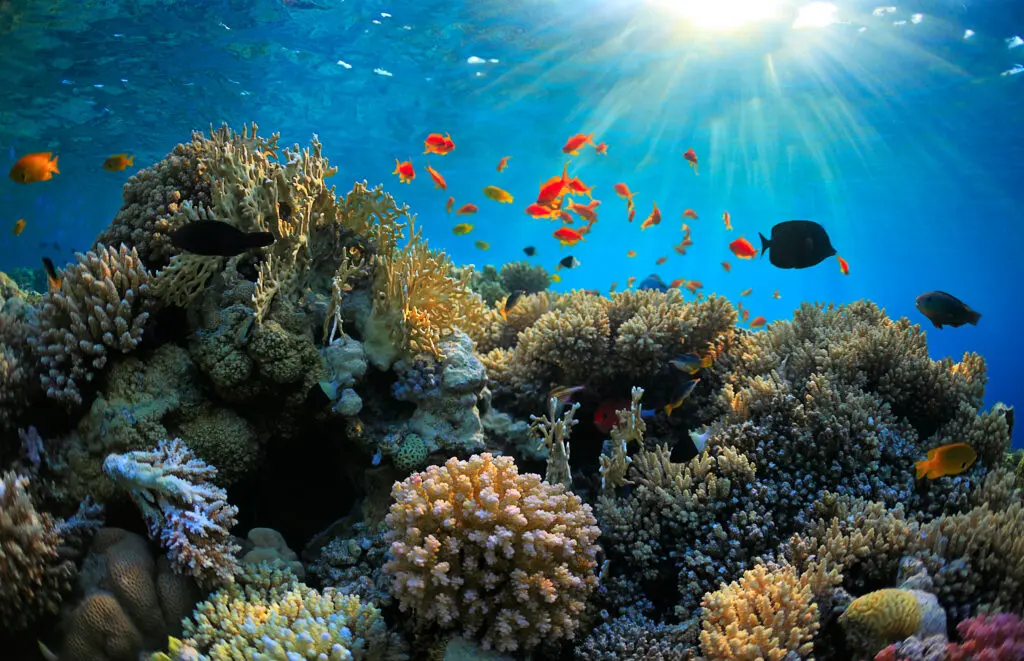Can you tell us a little about the problem that INVERSA is trying to address?
Invasive species represent a critical and urgent danger to ecosystems across the globe, and the fashion industry just might have a solution.
A primary threat to biodiversity, invasive species consist of non-native, typically human-introduced plants, animals, or pathogens that infiltrate and cause widespread harm within new, unfamiliar ecosystems. These species often lack natural predators in the environments they invade, which allows them to multiply swiftly and dominate habitats. A 2023 UN report revealed that invasive species account for 60% of species extinctions and an astounding $423 billion in damages annually.
There are numerous ways invasive species cause significant harm to our ecosystems. Here are a few examples:
- Invasive species outcompete native wildlife for essential resources such as habitat, food, and water, leading to ecosystem collapse and decreased essential ecosystem functions.
- They accelerate climate change by disrupting natural carbon and nitrogen cycles, unbalancing these intricate systems.
- Invasive species also exacerbate human vulnerability to climate hazards by weakening the resilience of ecosystems that humans rely on for protection and resources.
For example, Invasive lionfish threaten the resilience of coastal communities to climate hazards by disrupting coral reef ecosystems that provide natural protection against storm surges, erosion, and flooding. Lionfish also disturb the ecosystem balance by outcompeting native fish and causing unchecked algae growth, weakening coral reefs and their protective capabilities. This exposes communities to increased climate risks, and negatively impacts local economies and food security through the decline in native fish populations and tourism.

What is the relationship between invasive species and the fashion industry?
Addressing the threat posed by invasive species is essential for ensuring a sustainable future for both humanity and nature. Surprisingly enough, the fashion industry, with its strong demand for leather products, is well situated to facilitate a shift in how we source materials and the impacts they have.
Fashion has a problematic role in our planet’s biodiversity and health due to its high levels of microplastic pollution in our waterways, chemical pollution, carbon emissions, worker exploitation, and animal welfare. But what if it didn’t have to be this way? What if materials actually made the planet better?

Please tell us a bit more about INVERSA, and the work it’s doing –
INVERSA is a materials company that makes luxury leathers from invasive species. In fueling the large-scale removal of invasive species, our production process not only transforms these harmful organisms into quality/durable leather materials, but it also actively drives ecosystem restoration through invasive population removals and reduction. The company’s portfolio of invasive leathers helps address some of the most pervasive invasives in North America, including invasive python, lionfish, and Dragonfin® (nonnative carp). Eliminating invasive species is crucial for providing native biodiversity the opportunity to thrive. For instance, by removing a single adult invasive lionfish, approximately 70,000 native juvenile reef fish can be saved on average.

What happens to the rest of the animals that are being used to produce leathers?
INVERSA is conscious of the importance of minimizing waste throughout its supply chain and ensures that the entire animal is utilized for each species they work with. They collaborate with local fishers and byproduct manufacturers to repurpose invasive animal meat for diverse uses, including human consumption, pet food, or fertilizer.
What about the ethics side of these leathers – both in terms of people throughout the supply chain, and also animal rights?
INVERSA’s process also supports rural job creation. In Central America, for instance, many fishers we partner with have stopped hunting the dwindling snapper and grouper populations, and now make livable wages for the first time entirely by hunting lionfish – a win for these local communities and the local ecosystem. While invasive removals must happen to save wildlife, we strive to reduce the harm that is done in this process and ensure all partners abide by the American Veterinary Medical Association’s guidelines to reduce animal suffering, adhering to humane euthanization methods.
By focusing on reducing the damage caused by some of the most harmful invasive species, we can simultaneously reduce the harmful environmental and societal impact of the fashion industry by reducing its reliance on traditional leather resources.
Traditional leather production has other harmful components (GHGs, water, chemicals, processing, etc). Can you touch on how INVERSA’s supply chain differs from traditional leather production?
Both genuine and synthetic leathers have long faced scrutiny from sustainability-conscious consumers due to their high GHG emissions and use of plastic-based components. Finding a suitable leather alternative without compromising quality has proven challenging for the industry. By creating a market that supports the management of these invasive species, INVERSA and our fashion brand partners increase incentives for the removal of these harmful organisms while presenting an alternative leather option for the consumer.
In terms of GHG emissions and water use, our estimates based on initial analysis show significantly lower emissions created and water used when compared to traditional leather, but we are currently in the process of getting an LCA completed, and therefor do not yet have the 3rd party verification done on these estimates. We only work with REACH-certified processors/finishers for our tanning and manufacturing processes to ensure our products are in alignment with all chemical compliance policies.
Any final words you’d like to add?
The fashion industry faces many complex problems and companies like INVERSA demonstrate that innovative, market-driven solutions to some of these problems are possible, and can support the fashion industry in its transition to a greener economy. Innovators in this industry represent a new paradigm that serves as a model for the future of fashion, where sustainability and style coexist to tackle some of the most pressing environmental challenges our planet faces.
Know of other great solutions for the fashion industry, or have any questions? Email us at info@inversaleathers.com!
For more information, check out https://www.inversaleathers.com/, or follow the company on Instagram at @Inversaleathers.


